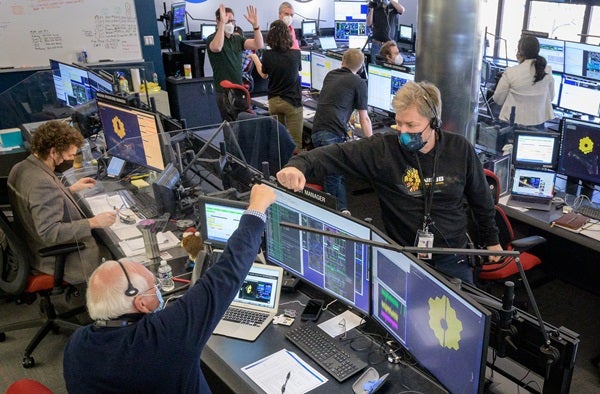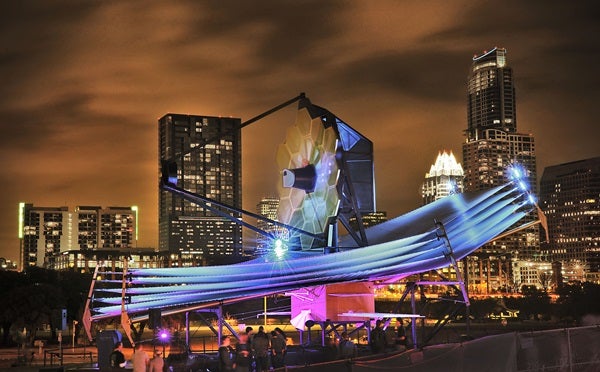NASA has pulled off the most technically audacious part of bringing its newest flagship observatory online: unfolding it.
On Saturday, Jan. 8, the operations team for the James Webb Space Telescope (JWST) announced that the observatory’s primary mirror had successfully unfolded its segments — the last major step of the telescope’s complicated deployment.
The moment was a euphoric moment of validation for the entire team. “We’re on an incredible high right now,” said Bill Ochs, JWST’s project manager, at a press conference. “Today represents the beginning of a journey for this incredible machine, to its discoveries that we’ll be making in the future.”
To fit inside the nose cone of the Ariane 5 rocket that launched it, the telescope had been designed to fold up, origami-style, and unfold once in space. The approach was risky: Like a Rube Goldberg machine, every step needed to occur correctly, in order. An engineering report concluded there were 344 different ways the process could fail, dooming the $10-billion observatory.
But now, NASA’s big bet seems to have paid off.
Beginning its journey
The elaborate deployment procedure began shortly after the Dec. 25 launch. On Jan. 4, the team finished unfolding and tensioning the craft’s sunshield, which will block the heat of the Sun and Earth and allow the telescope and its infrared-sensitive instruments to cool to –370 degrees Fahrenheit (–223 degrees Celsius).
The final major step was unfolding the telescope’s primary mirror wings. JWST’s 6.5-meter primary mirror consists of 18 hexagonal segments, three of which on each side were folded back at launch. Deploying them meant releasing the mechanisms holding them in place, using motors to rotate them into place, and then spending a couple hours to latch it into place.
On Friday, Jan. 7, the JWST team carried out this delicate process for the port wing. The next day, the team tackled the starboard wing, and at 1:17 P.M. EST, it latched into place.
At the Space Telescope Science Institute in Baltimore, JWST’s base of operations, engineers cheered and traded fist bumps. “The fact that it looked easy just emphasizes that we did all the right things leading up to this moment,” said Ochs.
With its mirrors now deployed, the craft is in its final form. As of Tuesday afternoon, it is just over 80 percent of the way to the L2 Lagrange point, which is just under 1 million miles (1.5 million kilometers) away. You can track its progress at JWST’s website.
JWST still faces a long road before it is fully operational. The team must next align the telescope’s mirrors, which should take about three months. Then it will finish commissioning all of its instruments, ensuring they are cooled and in proper working order. But if all goes well, in less than six months, the telescope’s first images will be revealed.











